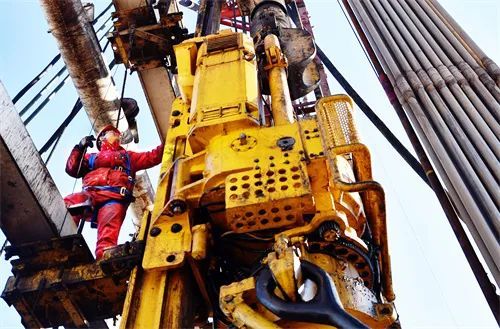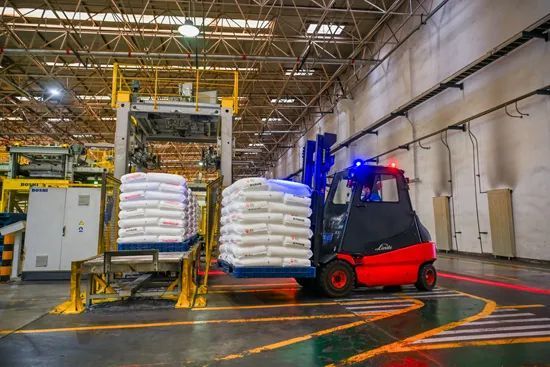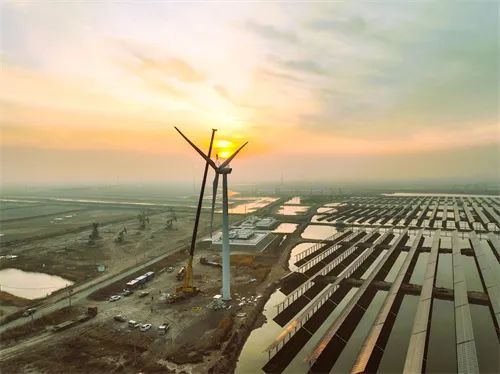Oil Giant China National Petroleum Surpasses Expectations with Three Consecutive Years of Record Highs
With the release of the 2024 financial report by China National Petroleum Corporation on March 30, the performance of the three major state-owned oil companies for last year has been revealed. In the context of a 2.5% year-on-year decline in international oil prices, the performance of the three major oil companies can be considered commendable.
Among them, PetroChina performed remarkably well, achieving continuous growth in operating performance in 2024, with net profit reaching a new historical high, demonstrating strong resilience and developmental vitality.
01
Looking back at the year 2024, international crude oil prices first rose and then fell, with the average annual price slightly declining year-on-year. At the same time, the substitution of transportation fuels intensified competition in the refined oil market, while the chemical industry remained in the trough of its business cycle.
Under the heavy challenges, what answer will the oil giants deliver?
From the perspective of operating revenue, Sinopec achieved an operating revenue of 3.07 trillion yuan in 2024, ranking first among the "big three" oil companies. China National Petroleum Corporation followed closely with an operating revenue of 2.9 trillion yuan, while China National Offshore Oil Corporation achieved a revenue of 420.5 billion yuan.

Image source: China Petroleum News Center
In terms of net profit, PetroChina achieved a net profit attributable to shareholders of 164.7 billion yuan, setting a historical high and ranking first among the "big three" oil companies. Sinopec was significantly impacted by the decline in prices and sales of refined oil and other products, resulting in a drop in net profit to 50.3 billion yuan. CNOOC benefited from its cost control advantages, achieving a net profit of 137.9 billion yuan, with a growth rate of 11.4%, marking the second highest net profit in its history.
Compared to domestic oil companies, the performance of international oil giants has not been optimistic.
Data shows that in 2024, the unaudited full-year unadjusted net profit attributable to the parent company of the five major international oil companies experienced a significant decline, with a year-on-year drop of 26.3%. Almost all oil companies were unable to escape the "embarrassment" of declining net profits.
The significant shrinkage in profits from the refining business was the main reason for dragging down the overall performance.
Based on the performance of major oil companies, China National Petroleum Corporation (CNPC) undoubtedly emerged as the "profit king" in the industry in 2024.
Then, in the situation where the industry is facing重重困境, how did China Petroleum manage to successfully traverse the cycle and achieve a逆势上扬 in performance?
02
A closer look at the reasons for PetroChina's impressive performance reveals that it is closely related to the outstanding performance of its upstream sector.
In 2024, China's domestic oil and gas production steadily increased to 220 million tons, with a growth rate of 2.2%. Among this, domestic crude oil production reached 110 million tons, and marketable natural gas production was 140.36 billion cubic meters, both accounting for over 50% of the domestic oil and gas production. This fully demonstrates the pivotal role of energy central enterprises as stabilizers.
In terms of oil and gas production, China Petroleum has always set the goal of increasing reserves and production. On one hand, it fully explores the potential of old oil fields. In 2024, all 10 old oil field "ballast stone" demonstration projects achieved overproduction.
On the other hand, China National Petroleum Corporation (CNPC) is vigorously promoting efficient exploration, focusing on three strategic directions: marine carbonate rocks, foreland structural belts, and unconventional resources, to tackle the pain points and difficulties in oil and gas exploration and development. In 2024, it achieved six major breakthroughs and ten significant discoveries, further solidifying its resource foundation.
In March 2024, in the heart of the Taklamakan Desert, China's deep-earth Tike-1 well broke through the 10,000-meter drilling depth milestone, becoming a microcosm of China's efforts to open up new frontiers for oil reserves and production.
In unconventional fields, China Petroleum has intensified the development of unconventional natural gas such as shale gas, tight gas, and coalbed methane. In 2024, the first coalbed methane field with a production capacity of one million tons of oil equivalent, the Daji Gas Field, was completed and put into operation.

In addition to the performance of the upstream oil and gas business, the refining and chemical and new materials sectors achieved an annual operating profit of 21.39 billion yuan, with both the commodity volume of chemical products and the production of chemical new materials showing growth. The refining and chemical business is transitioning from the traditional "fuel-based" model to a "feedstock-based" model.
In the context of a significant reduction in refining business profits, China National Petroleum Corporation (CNPC) is accelerating the adjustment of its existing structure, actively promoting projects to reduce oil and increase chemicals, as well as reducing oil and increasing specialties. It continues to advance its new materials business and has successfully navigated the cycle.
In the first half of last year, the Guangdong Petrochemical Refining and Chemical Integration Project of China National Petroleum Corporation entered the comprehensive trial production phase, becoming the only refining and chemical integration enterprise in China and abroad capable of processing all types of inferior heavy oil. This has propelled the refining and chemical business towards the mid-to-high end of the industrial chain and value chain.
In recent years, through the transformation and upgrading of its refining and chemical business, PetroChina has successfully developed a group of "product giants." Among them, its paraffin wax production has consistently ranked first globally, while its market share in bonded marine fuel, lubricants, and low-sulfur petroleum coke has remained the highest domestically. Additionally, Lanzhou Petrochemical's nitrile rubber capacity has secured the second position globally and the first in China.
In the field of new materials, China Petroleum has delivered outstanding performance, with production doubling compared to last year, marking the accelerated and thriving development of China Petroleum's new materials industry.
In addition, in 2024, China's oil sales business achieved an operating profit of 16.49 billion yuan, and the natural gas sales business achieved an operating profit of 54.01 billion yuan.
03
Reviewing the performance of major oil companies in 2024, their results are influenced not only by the external environment but also by their strategies for transitioning to lower carbon emissions.
Compared to the substantial profits of traditional oil and gas businesses, the "cost-effectiveness" of renewable energy operations is not particularly attractive in the short term. The overly aggressive low-carbon transition strategies of Western oil giants have, to some extent, impacted the companies' performance.
Compared to the "radicals" in the West, China Petroleum is more like a "balancer" who strategizes with foresight.
As a crucial pillar of energy security, China National Petroleum Corporation consistently prioritizes the oil and gas business as the cornerstone of the enterprise, steadily advancing the development of new energy initiatives on this foundation.

Last year, China Petroleum made steady progress in its new energy business. Among them, wind and solar power generation reached 4.72 billion kilowatt-hours, a year-on-year increase of 116.2%. The newly added installed capacity for wind and solar power was 4.954 million kilowatts, and the newly signed geothermal heating contract area was 75.12 million square meters.
Compared to solely developing new energy business, China Petroleum is more inclined to leverage its own advantages to achieve synergistic integration across the industrial chain.
For example, China National Petroleum Corporation's first large-scale renewable energy hydrogen production project at the Yumen Oilfield has begun operation. The high-purity hydrogen produced is delivered to enterprises such as the Yumen Oilfield Refining and Chemical Complex through hydrogen pipelines and tube trailers, completing the entire process from production to utilization.
In the production sector, China Petroleum develops new energy supply based on regional resource distribution, achieving integrated development of "oil and gas + new energy"...
In fact, the new energy industry and the traditional oil and gas industry have never been competitors. Apart from the upstream sector, there are also commonalities in the downstream refining and processing stages of the oil and gas industry.
According to data from the International Renewable Energy Agency (IRENA), global new energy investments will reach $4.4 trillion by 2030, involving a large amount of high-end chemical materials usage.
Domestically, it is expected that by 2030, the consumption scale of high-end chemical materials in the new energy sector will double. This undoubtedly provides an excellent opportunity for the transformation and upgrading of the refining and petrochemical sector.
In recent years, China Petroleum has taken advantage of the booming development of new energy to research and produce a large number of high-end chemical materials. For example, ultra-high molecular weight polyethylene resin used for manufacturing lithium battery separators, EVA film materials used for making photovoltaic module packaging materials, and low-sulfur petroleum coke used for negative electrode materials of new energy power batteries, etc. These materials not only help expand market share by leveraging the "tailwind" of new energy but also realize the transformation of the industrial chain towards the mid-to-high end.
China Petroleum's approach tells us that the oil and gas business and the new energy business are not simply "1+1," but rather require deep integration through collaborative development.
For energy companies in transition, it is essential to recognize that regardless of changes in the external environment, focusing on their core business and identifying opportunities in the new energy sector can achieve a "greater than 2" effect. This is indeed a practical path for traditional energy companies to transform.
【Copyright and Disclaimer】The above information is collected and organized by PlastMatch. The copyright belongs to the original author. This article is reprinted for the purpose of providing more information, and it does not imply that PlastMatch endorses the views expressed in the article or guarantees its accuracy. If there are any errors in the source attribution or if your legitimate rights have been infringed, please contact us, and we will promptly correct or remove the content. If other media, websites, or individuals use the aforementioned content, they must clearly indicate the original source and origin of the work and assume legal responsibility on their own.
Most Popular
-

List Released! Mexico Announces 50% Tariff On 1,371 China Product Categories
-

Nissan Cuts Production of New Leaf EV in Half Due to Battery Shortage
-

New Breakthrough in Domestic Adiponitrile! Observing the Rise of China's Nylon Industry Chain from Tianchen Qixiang's Production
-

Dow, Wanhua, Huntsman Intensively Raise Prices! Who Controls the Global MDI Prices?
-

Mexico officially imposes tariffs on 1,400 chinese products, with rates up to 50%






